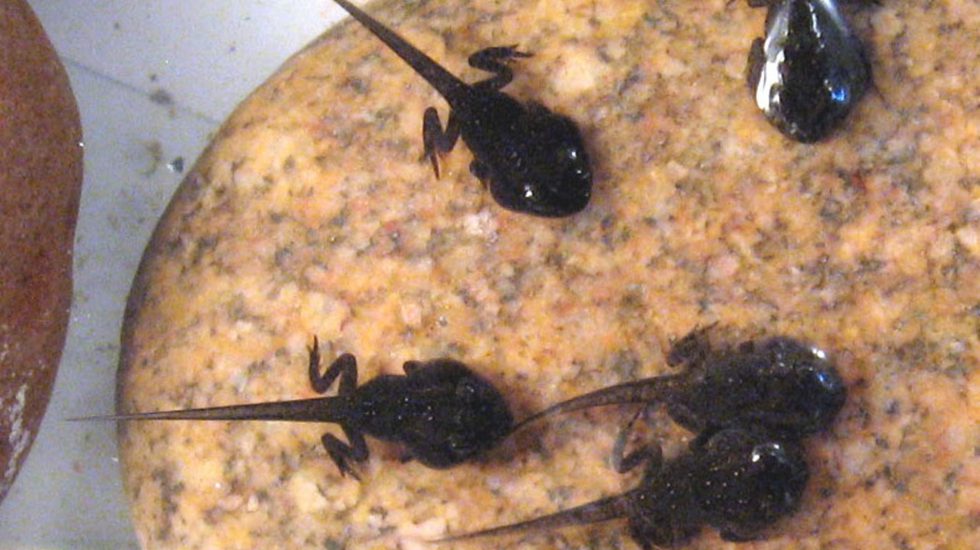Twists and turns of a tadpole tale
This year I’ve followed the serial drama of tadpoles that reside in a runoff pond beside Route 95 in the North Burial Ground in Providence.
Their saga comes via email and video posts from Greg Gerritt, founder of the Friends of the Moshassuck and author of the Prosperity for RI blog. Gerritt videotapes wildlife at the North Burial Ground, posting on YouTube under Moshassuckcritters.
The story started with the seven feet of snow that fell last winter. That snow melted slowly and steadily into the ground. Several near-rain-free weeks followed, and whatever water was in the drainage swale evaporated in early May.
The surrounding terrain harbors Fowler’s toads and gray tree frogs. But they won’t call without water nearby.
“The pond needs a good half-inch of rain before it starts to fill,” said Gerritt. “Two inches of rain is enough water for the pond to last three to four weeks.”
I wrung my hands in worry that the creatures would not get to breed in 2015. Then, from May 31 to June 2, several inches of rain fell, and the pond filled up.
On June 3, Gerritt reported that adult Fowler’s toads had emerged from their sandy-soil burrows nearby to sing, breed and lay eggs in the marshy spot. By June 5, the first gray tree frog sang. Over coming days, more frogs joined the chorus.
On June 6, Gerritt filmed hundreds of one-eighth-inch-long Fowler’s toad tadpoles swimming about the drainage swale. Tadpoles of both species need about six weeks to become adults. But under sunny skies and daytime temperatures in the 80s, the pond shrank. Thousands of tadpoles crowded into the remaining water.
On June 14, the pond was gone. The tadpoles died in a sun-simmered swell of slime; food for flies.
I felt sad.
Less than 24 hours later, however, it rained almost two inches, and the pond returned, along with singing frogs and toads. On June 21, it rained more than an inch, extending the pond. By June 22, tadpoles of Fowler’s toads were scooting around again. The frog tadpoles, which are pale blue with red tails, showed up a day or two later.
During the night of June 26, Gerritt discovered and videotaped the burrows in which the toads lived. He also taped a tree frog that lives in the vertical shaft of a stop sign. The frog sat atop the sign.
That night, Gerritt noted that the frogs and toads were silent. This suggested that their 2015 breeding season was coming to a close.
On the morning of June 27, my wife, Karen, and I visited Gerritt at the pond. We viewed the tadpoles, plus dragonflies, water striders, and other tiny swimming and flying signs of life.
Gerritt noted that there was little predation, such as fish, at the swale to swallow up the tadpoles. This suggested they had a good chance of becoming young frogs and toads if water remained, he said.
The pond handles runoff and serves as habitat for plants and animals, Gerritt said. This is an example of green infrastructure, he said.
According to the U.S. Environmental Protection Agency, “Green infrastructure uses vegetation, soils, and natural processes to manage water and create healthier urban environments.”
Cemeteries, Gerritt said, are sacred for people and other species. “They are often biodiversity hotspots,” he said.
Over the next 36 hours, more than two inches of rain fell. That might be enough to see the tadpoles to maturity. But then again, given the weather’s twists and turns, a long stretch of baking heat might still arrive to whither the swale.
Said Gerritt, “I will remain nervous about the pond drying up until all of the tadpoles have transformed into frogs and toads and hopped away.”
